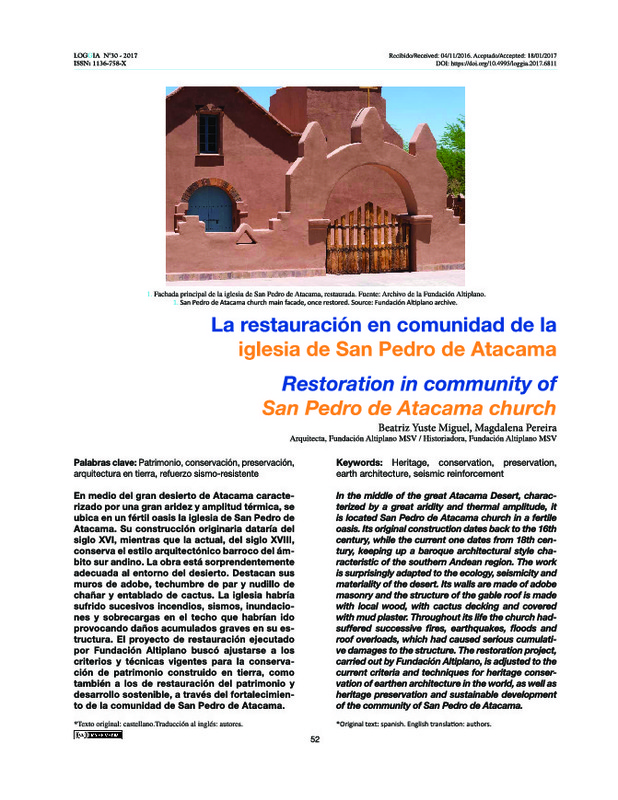JavaScript is disabled for your browser. Some features of this site may not work without it.
Buscar en RiuNet
Listar
Mi cuenta
Estadísticas
Ayuda RiuNet
Admin. UPV
La restauración en comunidad de la iglesia de San Pedro de Atacama
Mostrar el registro completo del ítem
Yuste Miguel, B.; Pereira, M. (2017). La restauración en comunidad de la iglesia de San Pedro de Atacama. Loggia, Arquitectura & Restauración. (30):52-63. https://doi.org/10.4995/loggia.2017.6811
Por favor, use este identificador para citar o enlazar este ítem: http://hdl.handle.net/10251/93722
Ficheros en el ítem
Metadatos del ítem
| Título: | La restauración en comunidad de la iglesia de San Pedro de Atacama | |
| Otro titulo: |
|
|
| Autor: | Yuste Miguel, Beatriz Pereira, Magdalena | |
| Fecha difusión: |
|
|
| Resumen: |
[EN] In the middle of the great Atacama Desert, characterized by a great aridity and thermal amplitude, it is located San Pedro de Atacama church in a fertile oasis. Its original construction dates back to the 16th century, ...[+]
[ES] En medio del gran desierto de Atacama caracterizado por una gran aridez y amplitud térmica, se ubica en un fértil oasis, la iglesia de San Pedro de Atacama. Su construcción original dataría del siglo XVI, la actual, ...[+]
|
|
| Palabras clave: |
|
|
| Derechos de uso: | Reconocimiento - No comercial - Sin obra derivada (by-nc-nd) | |
| Fuente: |
|
|
| DOI: |
|
|
| Editorial: |
|
|
| Versión del editor: | https://doi.org/10.4995/loggia.2017.6811 | |
| Tipo: |
|








